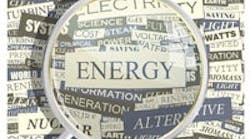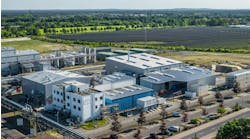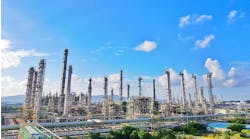Once problems were identified (see the first part of this case study), the project implementation plan included installing:
[pullquote]
• new dryers and mist-eliminating filters;
• three pressure/flow controllers, one backpressure/flow controller and two 30,000-gal air storage tanks;
• new piping and retrofits on existing portions of the piping system;
• a programmable logic control (PLC) compressor automation system; and
• a compressed-air management information system (MIS).
The facility also repaired compressors performing below optimum levels. .
Once components were installed and repaired, the plant decided to reconfigure the four systems into one integrated system with three separate sections (high, medium and low pressure) with their own pressure levels.
The PLC and MIS provided a new control strategy that managed all sections of the plant's header, making the integrated system possible. The evaluation concluded that the 125- and 115-psig systems could operate in one section with two pressure/flow controllers maintaining the different pressure levels. The 30,000-gal tanks were placed in the high- and medium-pressure segments of the system. The third pressure/flow controller was put in the low-pressure section, while the backpressure/flow controller was installed in the high-pressure section to maintain a constant pressure and eliminate blowoff by directing the airflow to the storage receiver as high-pressure air demand decreased.
In addition, installation of a backpressure valve on the high-pressure section enabled release of excess air — that would otherwise be vented in a cascading fashion — to the medium-pressure header. Pressure/flow controllers let down excess air in the medium-pressure section into the low-pressure section. Lastly, the plant chemically cleaned the aftercoolers and converted them to use cooling tower water rather than chilled water.
Results
The project greatly improved system operation and reduced energy costs. The new control strategy combined accurate anticipation of air demand shifts with effective use of storage capacity, enabling the compressors to operate at optimum efficiency. This largely reduced compressor blowoff. The increased storage capacity combined with the pressure/flow controllers greatly helped stabilize pressure levels. The newly configured dryers experienced substantially less pressure drop, further stabilizing pressure levels. Applications now could function effectively at lower pressure levels. The system's pressure after implementing the project actions returned almost to their normal levels of 225, 120 and 87 psig. Once the aftercooler problems were corrected, heat-transfer capacity improved to the point that the air was sufficiently cool for the dryers to separate the moisture more effectively, eliminating the moisture contamination problem.
The improvements allowed plant engineers to take some of the compressors offline, while still maintaining the needed airflow and pressure to satisfy production requirements. The plant's base load after the changes was only six compressors totaling 5,200 hp, with one more 500-hp compressor called upon when needed. Compressed air consumption declined from 20,000 to 15,000 scfm. The reduction in compressors yielded an annual energy savings of $512,000 and 15,000,000 kWh at the energy costs prevailing in 1999. The reduced need for chilled water resulted in a simple payback of less than three years for the project cost implemented in the first phase and contributed to a third of the total energy savings.
Tips for Managing Air compressors
Common problems leading to inefficiency and higher cost to maintain compressed air systems include: 1) poor quality of air, both wet and at low pressure at user location; 2) inefficient air dryers wasting excessive air quantities; 3) excessive compressed-air venting due to system hardware design and the controls; 4) leaks in the fittings and user equipment; and finally, 5) abuse and misuse of compressed air.
It's worthwhile to review your system even if it's not posing any of these problems now. Even a simple leak survey, done when no air demand is needed, could reveal wasted "invisible dollars." However, if problems are reported, review the total compressor system to ensure optimal performance. If possible, verify the demand of the compressed air at normal operating conditions and the total capacity of the operating compressors.
A combination of optimal equipment configuration, an effective control strategy, adequate storage, and proper maintenance and air demand can improve productivity and save energy.
Source: Project Fact sheet, Office of Industrial Technologies, Energy Efficiency, U.S. Department of Energy
VEN V. VENKATESAN is Chemical Processing's Energy Columnist. You can e-mail him at [email protected]



